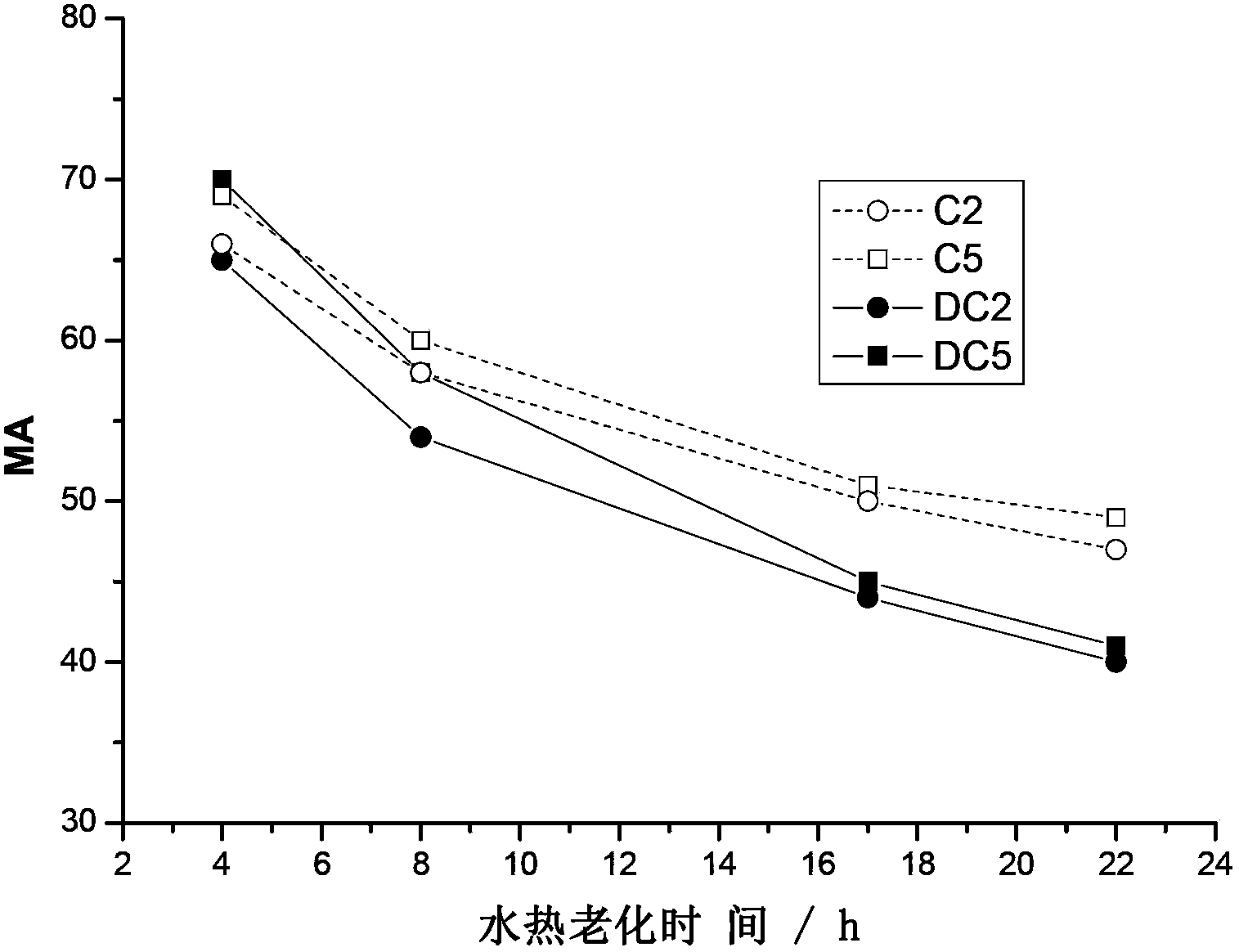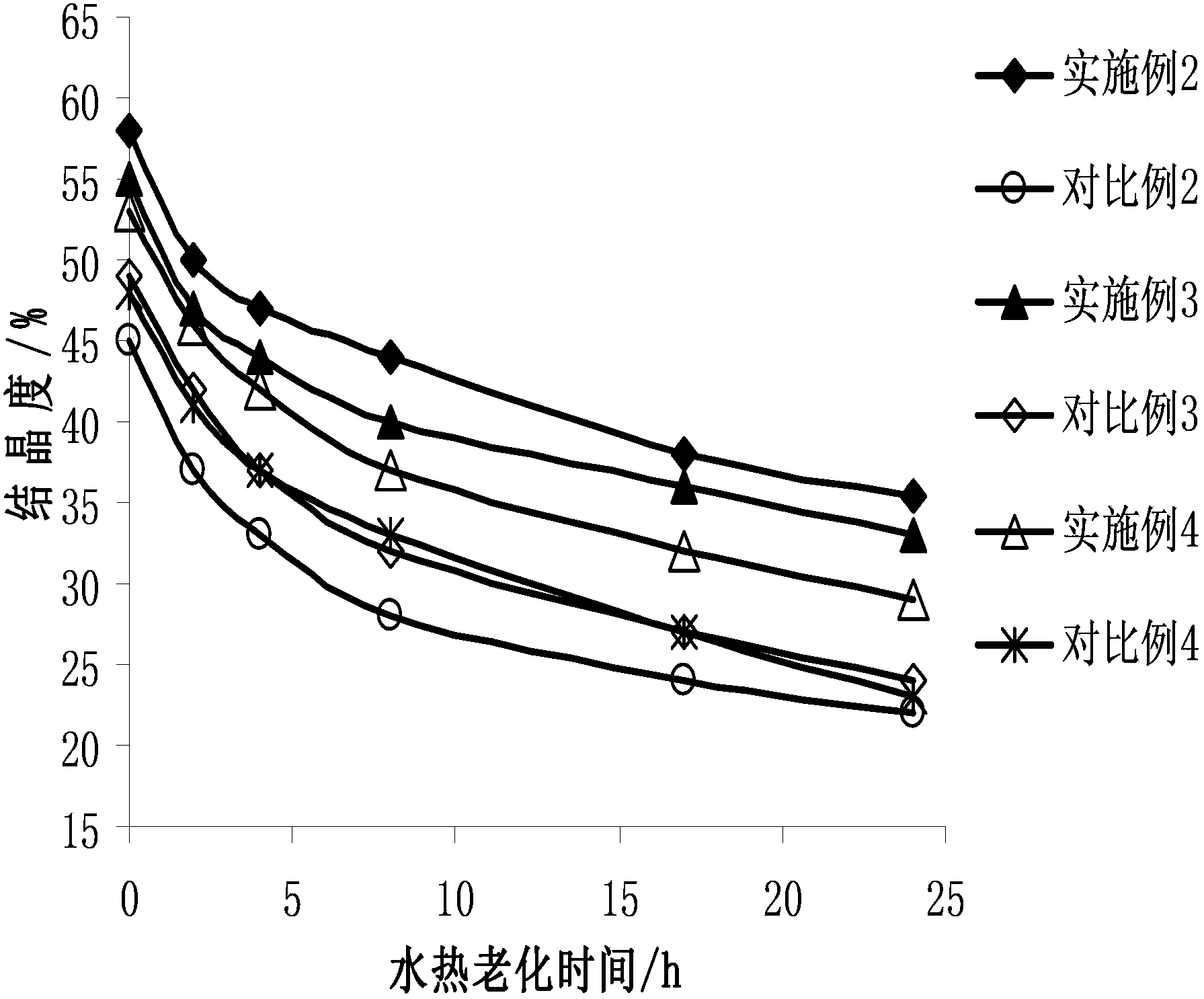Catalytic cracking catalyst
A catalytic cracking and catalyst technology, applied in catalytic cracking, physical/chemical process catalysts, molecular sieve catalysts, etc., can solve the problems of zeolite framework destruction, zeolite product crystallinity reduction, zeolite crystallinity reduction and other problems, achieving good stability, reducing The effect of increasing coke formation rate and improving the utilization rate of heavy oil
- Summary
- Abstract
- Description
- Claims
- Application Information
AI Technical Summary
Problems solved by technology
Method used
Image
Examples
preparation example Construction
[0032] The preparation method of the above-mentioned modified Y-type molecular sieve is obtained by using NaY molecular sieve as a raw material through the preparation process of "three-cross three-baking". The so-called "three-cross three-baking" is a general abbreviation for a molecular sieve modification process in the field. That is, the combined modification process of three times of exchange and three times of hydrothermal treatment is adopted. The rare earth and phosphorus are exchanged, and the exchange solution containing phosphorus and the exchange solution containing rare earth are added for exchange. Phosphorus can be added in any exchange process, and can be added once or several times. The rare earth can be added in any exchange process other than the first exchange, and the exchange process can also add a dealumination agent to carry out chemical dealumination to promote the removal of aluminum. The chemical dealumination process can be carried out in any exchange...
Embodiment 1
[0073] (1) Preparation of modified molecular sieves
[0074] Use NaY molecular sieve as raw material to exchange with ammonium sulfate solution. The treatment conditions are: NaY molecular sieve (dry basis): ammonium sulfate: water = 1:1.0:8 (weight ratio), adjust the pH value to 3.5 with sulfuric acid, exchange at 85°C for 1 hour, wash . Hydrothermal roasting treatment, roasting temperature 580°C, 100% steam roasting time 2h. Treat the post-baked sample with a solution containing rare earth, the treatment conditions are: a baked molecular sieve (dry basis): rare earth chloride (according to RE 2 o 3 Calculated): water = 1:0.042:8 (weight ratio), exchanged at 70°C for 1h, and washed with deionized water. Hydrothermal roasting treatment, roasting temperature 580°C, 100% steam roasting time 2h. Treat the sample after secondary baking with a solution containing phosphoric acid and oxalic acid. The treatment conditions are: secondary baking molecular sieve (dry basis): phospho...
Embodiment 2
[0084] (1) Preparation of modified molecular sieves
[0085] Use NaY molecular sieve as raw material to exchange with ammonium chloride solution. The treatment conditions are: NaY molecular sieve (dry basis): ammonium chloride: water = 1:0.8:8, adjust the pH value to 4.0 with hydrochloric acid, exchange at 90°C for 1 hour, and wash. Hydrothermal roasting treatment, roasting temperature 550°C, 80% steam roasting time 2h. Treat the post-baked sample with phosphoric acid and fluosilicic acid solution, the treatment conditions are: a baked molecular sieve (dry basis): phosphoric acid (according to P): fluosilicic acid: water = 1: 0.01: 0.03: 8, hydrochloric acid to adjust pH2. 8. Exchange at 70°C for 1 hour, filter; wash with deionized water. Hydrothermal roasting treatment, roasting temperature 550°C, 70% steam roasting time 2h. Treat the sample after secondary roasting with a solution containing rare earth, and the treatment conditions are: secondary roasting molecular sieve (...
PUM
| Property | Measurement | Unit |
|---|---|---|
| specific surface area | aaaaa | aaaaa |
| specific surface area | aaaaa | aaaaa |
| crystallinity | aaaaa | aaaaa |
Abstract
Description
Claims
Application Information
 Login to View More
Login to View More - R&D
- Intellectual Property
- Life Sciences
- Materials
- Tech Scout
- Unparalleled Data Quality
- Higher Quality Content
- 60% Fewer Hallucinations
Browse by: Latest US Patents, China's latest patents, Technical Efficacy Thesaurus, Application Domain, Technology Topic, Popular Technical Reports.
© 2025 PatSnap. All rights reserved.Legal|Privacy policy|Modern Slavery Act Transparency Statement|Sitemap|About US| Contact US: help@patsnap.com



